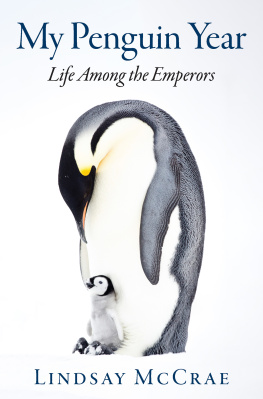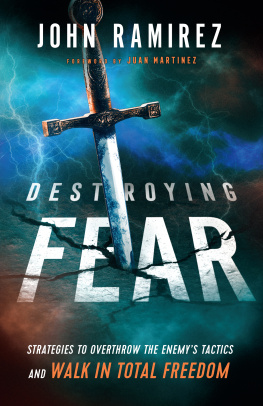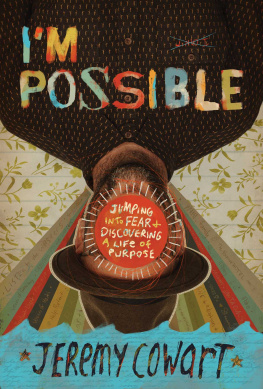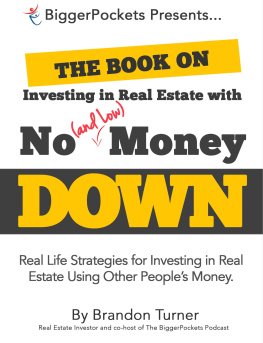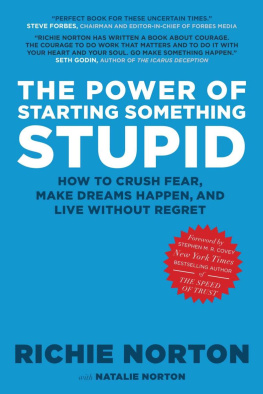Copyright 2017 by James McCrae
Published and distributed in the United States by: Hay House, Inc.: www.hayhouse.com Published and distributed in Australia by: Hay House Australia Pty. Ltd.: www.hayhouse.com.au Published and distributed in the United Kingdom by: Hay House UK, Ltd.: www.hayhouse.co.uk Published and distributed in the Republic of South Africa by: Hay House SA (Pty), Ltd.: www.hayhouse.co.za Distributed in Canada by: Raincoast Books: www.raincoast.com Published in India by: Hay House Publishers India: www.hayhouse.co.in
Cover design: James McCrae Interior design: Nick C. Welch Interior photos/illustrations: James McCrae
All rights reserved. No part of this book may be reproduced by any mechanical, photographic, or electronic process, or in the form of a phonographic recording; nor may it be stored in a retrieval system, transmitted, or otherwise be copied for public or private useother than for fair use as brief quotations embodied in articles and reviewswithout prior written permission of the publisher.
The author of this book does not dispense medical advice or prescribe the use of any technique as a form of treatment for physical, emotional, or medical problems without the advice of a physician, either directly or indirectly. The intent of the author is only to offer information of a general nature to help you in your quest for emotional, physical, and spiritual well-being. In the event you use any of the information in this book for yourself, the author and the publisher assume no responsibility for your actions.
Library of Congress Cataloging-in-Publication Data
Names: McCrae, James, date, author.
Title: Sh#t your ego says : strategies to overthrow your ego and become the hero of your story / James McCrae.
Other titles: Shit your ego says
Description: 1st edition. | Carlsbad, California : Hay House, [2017]
Identifiers: LCCN 2016037607 | ISBN 9781401951191 (tradepaper: alk. paper)
Subjects: LCSH: Conduct of life. | Ego (Psychology) | Peace of mind. | Self-realization.
Classification: LCC BF637.C5 .M3595 2017 | DDC 158.1--dc23
LC record available at https://lccn.loc.gov/2016037607
ISBN: 978-1-4019-5119-1
10 9 8 7 6 5 4 3 2 1
1st edition, February 2017
Printed in the United States of America
Dedicated to my parents, my sisters,
and the light of inspiration,
which is everywhere.
(And, I suppose, my Ego, a worthy opponent.)
CONTENTS
Just as nature takes every obstacle, every
impediment, and works around itturns it to
its purposes, incorporates it into itselfso, too,
a rational being can turn each setback into
raw material and use it to achieve its goal.
Marcus Aurelius

Flamenco Beach, Culebra, November 2012
CULEBRA I:
THE SNAKE

Across the winding road of history, one of the most enduring mythological symbols, both ancient and modern, has been the snake. The snake metaphor has been used by cultures around the world to represent a spectrum of human experiencesgood and evil, creativity and death, wisdom and temptation. In some Native American legends, for example, the snake is considered a living incarnation of Mother Earth who holds power over nature. When humankind respects nature, the legend goes, the snake respects mankind, and provides good weather and prosperity. When mankind disrespects nature, the snake disrespects mankind, sending drought and natural disasters. Vedic literature speaks of a powerful energy force, called kundalini, coiled like a snake at the base of the spine. They say that when we awaken this force through yoga and meditation, we will unlock higher levels of consciousness and creativity. Hinduism gives us Lord Vishnu, the great creator, who sat on a thousand-headed snake and exhaled a single breath that gave birth to the universe. In Haitian voodoo, the snake is a sacred symbol that personifies the bridge between physical and spiritual worlds. And, of course, we have the most famous snake of all. In Genesis, a snake appears to Eve in the Garden of Eden, tempting her with forbidden fruit. The snake promises knowledge and power, distracting Eve from her purpose and leading herand, as the story goes, all of mankindastray.
Culebra is a Spanish word that means snake. Culebra is also a small island 17 miles east of Puerto Rico. On this island, on the verge of a nervous breakdown, I hit rock bottom.
This book was an accident.
It was 10 oclock in the morning, and the sun was already hot. Barefoot on Flamenco Beach, I checked my iPhone for messages. A few friends had texted to ask if everything was alright. I could not tell if everything was alright, so I put the phone back in my pocket and did not respond.
Culebras defining characteristic is the white sand. It is both beautiful and strange and resembles sand in a state of shock. In Moby-Dick, Herman Melville wrote that the color white has an elusive quality which, when divorced from more kindly associations, could heighten the thought of terror. Melville cited the polar bear and the great white shark as examples. What but their smooth, flaky whiteness makes them the transcendent horrors they are? he questioned. To this list I would add the white sand of Flamenco Beach. The Atlantic Ocean was quiet and I was alone.
In the distance a red-tailed hawk darted from the trees and soared above the water. Had someone been watching, they would probably tell you that I looked cool and collected, like a monk watching the ocean tide come and go like a mantra. The viewlush green mountains, dark forests, a picturesque sun above the Caribbean Seawas breathtaking, but inside I felt panic. The bright sun felt like an interrogation room. New York City was underwater, and I was homeless.
I didnt know what to do, so I sat on the beach and did nothing. One week earlier, Hurricane Sandy had ripped through New York City like a WeedWacker. It was measured as the worst storm in the citys history. Lower Manhattan was underwater, hundreds of people had died, and thousands more, including myself, had a fish tank for an apartment. This is crazy, I thought, taking a swig of red wine. It was too early to drink. I took another swig. I wanted to run away, to be somewhere else, but I looked around and there was nowhere to run. I closed my eyes and opened them again. The ocean remained but the hawk was gone.

If you want to be a writer, you should move to New York City, everyone told me. So I did. I said good-bye to my career as an advertising executive, sold my possessions, bid adieu to my friends and family, and purchased a one-way ticket from MinneapolisSaint Paul International Airport to LaGuardia Airport in Queens, New York. All I had to my name were a few suitcases and the vague recollection of something Paulo Coelho had written: When you want something, all the universe conspires in helping you to achieve it. It seemed as though I had barely unpacked when the waves hit.
Hurricane Sandys ferocity was unexpected. We knew a storm, some storm, was coming. But most people, including myself, took minor precautions. Fuggedaboutit, was our attitude. This is New York. We dont run away from a little bad weather. For reasons closer to boredom than safety, I spent the night of the storm in New Jersey with Madison, a girl I was newly dating. We matched our strong resolve with stronger drinks and spent the night watching movies one state away, safe from the storm. By 11 oclock the electricity in Madisons apartment was blinking on and off, and the wind was blowing with intensity. We did not realize that a few miles away the Hudson River was rising, and Lower Manhattan was turning into a swimming pool. Madisons electricity went out, this time for good, so we went to bed. We made love on the fourth floor, then fell asleep as rain hit the windows. My new apartment in Broad Channel, Queens, however, located on the water in Jamaica Bay, was not so lucky. I had just signed the lease and was scheduled to move the next day. The water was knee-high before midnight. Within hours everything was destroyed.
Next page

